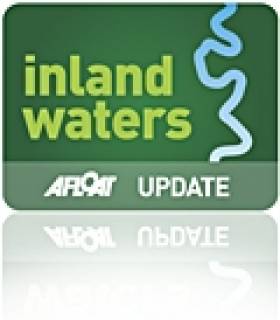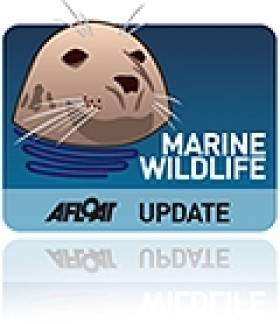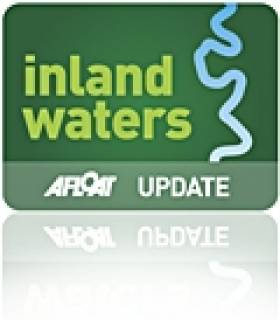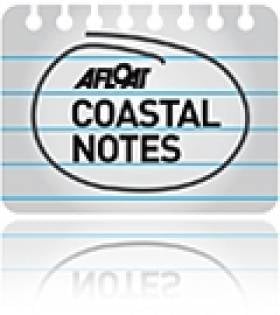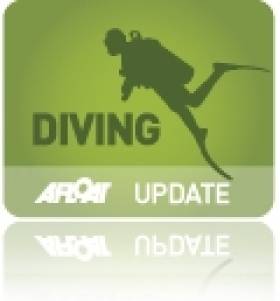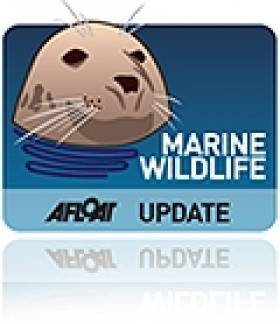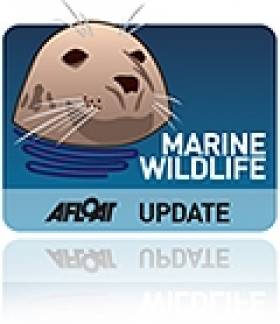Displaying items by tag: wildlife
Ponds Better for Biodiversity Than Rivers and Lakes - An Taisce Publication
Creating and managing a pond for wildlife is the theme of a new publication by An Taisce.
Ponds are a “low cost” and “straightforward tool” to tackle biodiversity loss and improve local environments, it says.
The pamphlet/poster has been drawn up by An Taisce’s Legacy4LIFE Ponds for Biodiversity team, and it includes a poster on key steps towards creating and managing a pond drawn by children’s book illustrator Brian Fitzgerald.
The Ponds for Biodiversity team says it hopes that the guidance offered in the new publication will “further encourage pond creation and management nationally”.
“Increased local level pond creation supports habitats and refuges for many of Ireland’s wildlife including plants, mammals, birds, amphibians and a host of macroinvertebrates,” it says.
Ponds have been shown to host more biodiversity than rivers and lakes, supporting an impressive two-thirds of freshwater species, including some that are categorised as threatened on the International Union of Conservation for Nature (IUCN) red list for Ireland.
The increased uptake of pond creation and management across the country will help tackle Ireland's water quality status issues.
River Barrow Has Potential for Tourism
#INLAND WATERWAYS - A new study on the River Barrow and its environs recommends the development of "activity hubs, tourist trails and new angling and boat facilities", The Irish Times reports.
Waterways Ireland and Fáilte Ireland commissioned the Barrow Corridor Recreational, Tourism and Commercial Identification Survey to find ways to exploit the area's "undeveloped potential" for tourism.
The survey covered the river itself as well as its estuary and the Barrow branch of the Grand Canal. Its findings pointed to a number of areas where development is already being actioned, such as in boating and cruising, nature and wildlife, and angling.
Environment Minister Phil Hogan, who launched the study in Carlow yesterday, hailed the co-operation of the agencies and county councils involved.
The Irish Times has more on the story HERE.
Warning Over Oil Drill Threat to Rathlin Island Wildlife
Wildlife on Rathlin Island could be under threat if oil-drilling licences are awarded in the area, the Belfast Telegraph reports.
The north Antrim coast has been earmarked as a site for potential oil exploration in the latest round of British Government licensing, despite the area being designated as both a Special Protection Area and a Special Area of Conservation.
Environmental experts have warned of the devastating effect that oil drilling could have on marine wildlife on Rathlin Island and the nearby coastline.
"We've seen off the coast of Aberdeenshire that no matter how careful the drilling, there is always the risk of a spill," said Claire Ferry of the RSPB.
"In this case the spill happened far away from any vulnerable wildlife colonies, but just imagine the impact if that oil was washing onto a globally important seabird colony."
The Belfast Telegraph has more on the story HERE.
New Doco Tells Story of Royal Canal
A new documentary on Ireland's waterways is being filmed in Mullingar this week.
The series will follow naturalist and broadcaster Dick Warner as he explores the Royal Canal in time for the final reopening of the entire route.
Warner will be taking the Rambler, an original canal tug barsg, from Dublin through to Lough Ree for the first time since 1923.
Warner told the Westmeath Examiner that he's "enjoying the wildlife side of it the most, the kingfishers and herons, the wildflowers, that's what I've loved the most about this journey. We're making very good progress. We're in Ballymahon now and we hope to reach the Shannon by towards the end of this week."
Waterways - The Final Journey is set to come to our screens in August.
The Westmeath Examiner has more on the story HERE.
A Day in the Life of a West Cork Whale Watcher
Today's Irish Times recounts a day in the life of whale watch operator Nic Slocum.
Originally from the UK, Slocum traded tiring commutes to London for the peaceful life of sailing in west Cork 10 years ago, and shortly after turned his hobby into a new business by running whale watching excursions.
"We don’t promise whales and dolphins every time because they are unpredictable creatures," says the Whale Watch West Cork proprietor, "but for anyone interested in wildlife, there is an abundance of things to see. The marine coast is spectacularly beautiful here."
The Irish Times has more on the story HERE.
Dive Ireland takes place this Weekend
CFT who are the national governing body for sports diving in Ireland will hold it's AGM and National Dive Conference at this event.
Some of the speakers include the following:
Jack Ingle Kit configuration
Barry McGill Deep wreck diving off the Donegal Coast
Nigel Motyer Underwater photographer
Tim Carey & Eoin Mc Garry Dive expedition to Asgard II in 2010
Ken O'Sullivan Irish ocean wildlife series Showing January 23rd TG4
Shane McArdle Sports Partnership and what it could mean for CFT clubs
More details and timetable HERE
New Course For Marine Tour Operators
The Irish Whale and Dolphin Group (IWDG) is running a new course for marine wildlife tour operators in Galway on 27-28 November.
The two-day course - at the campus of the Galway-Mayo Institue of Technology in Letterfrack - is intended to promote and support responsible marine wildlife tourism, and may provide a basis for a future accreditation scheme for the industry.
The course will be delivered by Dr Simon Berrow and Conor Ryan of the IWDG and is part funded by the Irish Environmental Network under the Department of Environment, Heritage and Local Government's Biodiversity Fund 2010.
Topics covered in the course will include the identification and ecology of marine animals and sea birds, as well as the relevant legislation pertaining to the wildlife tourism industry.
The course fee is €50 per person. Further information is available from Simon Berrow at the Irish Whale and Dolphin Group, Merchants Quay, Kilrush, Co Clare at 086 8545450 or [email protected].
Fin Whales Spotted off Waterford
The first inshore Fin Whales of 2010 have been spotted off the Waterford coast, the Irish Whale and Dolphin Group have reported. The Fin Whale is the second largest animal on the planet, with only the Blue Whale larger. Fin whales can grow to 27 metres in length, and weigh up to 70 metric tonnes and live to nearly 100 years.
The Irish Whale and Dolphin Group carried out a whale watching session at Ram Head in Ardmore. The description that follows is from the IWDG website, which you can find here.
"With what looked like a brief window of opportunity we arrived yesterday evening 5th July at 19.40 to carry out one of our 100 minute effort watches at Ram Head, Ardmore, Co. Waterford. With sea conditions and visibility excellent, it seemed likely that if there was anything out there we’d have a good chance of seeing it.
Within half an hour Ann picked up on a "low puffy" blow about 8 km east-south-east of us. The animal proved to be extremely elusive and it was another 20 minutes before it was seen again as it headed towards the horizon. Yet again it disappeared and as Ann stayed watching the area where this whale was sporadically surfacing, I decided to continue my scan. There in the usual ‘hot spot’ for whale activity, due south of me was our first fin whale of the season. This animal was behaving in a much more reasonable manner. Three or four tall vapour plumes appeared in sequence as the whale steamed towards Capel Island.So, once again, as in several previous years, Ardmore has also proved to be the place to be to witness the arrival of the first of these welcome visitors to our coastline. Let’s hope they stick around a bit before heading along the coast to Cork!
We never secured an ID on the first whale, but considering that humpback (HBIRL3) also known as ‘Boomerang’ has twice before been seen in the same week in July in the same patch of water (15th July 2002 and 13th July 2008) might he have decided to visit us again this year?
As the weather window appears to have closed again it seems unlikely that we will get a chance to do a watch for a while so I guess we’ll never know!
Andrew Malcolm & Ann Trimble, IWDGAlgal Bloom Heads for Ireland
A NASA satellite has spotted an enormous algal bloom off the south-west corner of Ireland, heading for the coast via the Gulf Stream. The agency said that while volcanic deposits of silt on the water can encourage these blooms, this particular event is unlikely to have resulted from the Icelandic eruption.
View the pic HERE
NASA says: Late May 2010 brought peacock-hued swirls of blue and green to the North Atlantic. The iridescent waters formed a giant arc hundreds of kilometers across, extending from west of Ireland to the Bay of Biscay. The Moderate Resolution Imaging Spectroradiometer (MODIS) on NASA’s Terra satellite captured this natural-color image on May 22, 2010. The vibrant colors are from tiny organisms, phytoplankton, that grow explosively in the North Atlantic—from Iceland to the shores of France—in the spring and summer.
Phytoplankton require nutrients to reproduce, and phytoplankton blooms are often tied to events that bring nutrients to the ocean surface, such as dust plumes. Volcanic ash can also contribute nutrients for phytoplankton blooms. Researchers from the University of Hamburg’s Institute of Geophysics found that a 2008 eruption of the Kasotochi Volcano in the Aleutian Islands generated a massive phytoplankton bloom in the Northeast Pacific Ocean. They concluded that iron-rich ash falling on waters that are otherwise poor in iron can create conditions in which phytoplankton thrive.
MODIS acquired this image after weeks of eruptive activity at Iceland’s Eyjafjallajökull Volcano. Considering that ash plumes from that volcano closed airspace over much of Europe, one might wonder whether ash provided fertilizer for this bloom. In this case, the answer is probably no. The North Atlantic Ocean already contains plenty of iron, and these waters experience massive phytoplankton blooms every spring and summer.
http://earthobservatory.nasa.gov/IOTD/view.php?id=44073
Welcome to Afloat TV

Since 2003 the team behind Afloat magazine has also been producing high-end, internationally appealing and entertaining factual documentaries on the Irish waterways. The production team are a mix of creative, technical and business people whose expertise guarantees an innovative approach to production and a high-quality finished product. The focus is on marine based programmes which entertain and educate. The work has been broadcast on RTE One and internationally on Sky Channels.
The Bay
Screened on RTE One in 2005.
Take a trip around the one half of Ireland's capital city you probably know the least. A new four-part documentary series, The Bay will be screened over four consecutive Wednesdays in May. Using spectacular aerial and underwater footage, the series features a combination of personality-led interviews and themes to tell the story of Dublin's unique waterway. Dublin Bay stretches over six kilometres, from Howth Head on its northern tip to Dalkey Island in the south. It's a place most Dubliners simply take for granted, and one of the capital's least visited places. But there's more going on out there than you'd imagine. And that's why The Bay was made. The series introduces viewers to the rich diversity of activities and personalities around the bay, while also touching on the serious environmental and political issues facing it. Find out more about the bay here.
The Harbour
Screened on RTE One in 2007.
It’s one of the largest natural harbours in the world – and those living near Cork Harbour insist that it’s also one of the most interesting. This was the last port of call for the most famous liner in history, the Titanic, but it has been transformed into a centre for chemical and pharmaceutical industry. Giraffe wander along its shores, from which tens of thousands of men and women left Ireland, most of them never to return. The harbour is home to the oldest yacht club in the world, and to the Irish Navy. This deep waterway has also become a vital cog in the Irish economy. ‘The Harbour’ is not a history programme, nor is it a news focus. It’s simply an exploration of this famous waterway, its colour and its characters. Find out more about the harbour here.
The Estuary
Screened on RTE One in 2007.
The story of the Shannon estuary might well be one of neglect, except that against the odds this waterway has become one of Ireland's greatest natural resources. Windswept, sitting on the edge of the Atlantic, often ignored by the nation. The story of the Shannon estuary might well be one of neglect, except that against the odds this waterway has become one of Ireland's greatest natural resources. A new four-part documentary series, from the makers of RTÉ's The Bay and The Harbour series, uncovers the secrets of the Shannon Estuary. From flying boats to film-making, wildlife to wind-farms, the series reveals how a 100km-stretch of the Shannon waterway has become a hotbed for innovation in Ireland. Up to 40% of Irish energy needs are met here, on the shores of a waterway that is also home to Ireland's second largest airport, a 10,000 student university and a massive cargo port. Ireland - and the world - has learned from the estuary. The first duty free shop was opened here, along with the first industrial free zone. Over the years, thousands of business and political leaders from across the globe have come to Shannon to discover its secret - in the hope that they might copy it. Long before Ireland heard of green energy, this place was producing it. Listen in to dolphin conversations beneath the Shannon's waterline. Uncover the mystery of the Ark, the church on wheels built by a priest who prayed when the tide went out. Narrated by Brenda Fricker, the series aired on Friday nights at 7.30pm on RTÉ One from May 4th 2007. Find out more about the estuary here.
The Navy
Screened on RTE One in 2007.
60 years of the Irish Naval Service. Celebrating the 60th anniversary of the Irish Naval Service, this 3 x half-long feature documentary shows how the Service has evolved into a multi-tasking, multi-disciplinary force. Most Irish people rarely come into contact with the Naval Service, and so are unaware of the range of activities it undertakes. This documentary provides an ideal opportunity to reveal the full extent of the Service’s duties – and the commitment of those who serve on Ireland’s fleet.
The Regattas
Screened on RTE One, 2007 and Sky Sports in 2009.
Sailing featured in RTE’s Christmas schedules this year, with the broadcast of a half-hour documentary feature on the Volvo Dun Laoghaire Regatta 2007. The production, entitled ‘The Regatta’, was shot over four days in Dublin Bay during this year’s regatta. Made by Baily Films, the company behind earlier critically-acclaimed water-based documentaries The Bay, The Harbour, The Estuary and The Navy, it features spectacular on-board footage from a range of craft competing in the event. The Regatta takes viewers both on board the competing craft, and behind the scenes, to examine the challenges thrown up by organising such a large-scale event on the bay. The Regatta was broadcast on RTE 1 on Saturday, December 22, at 4.20pm.
IN DEVELOPMENT
Afloat TV projects at an advanced stage of development include:
The Edge of Ireland
Ireland’s attitude to the seas that surround her is one of the most curious in the world. An island nation, with more coastline than most other European nations, most of her citizens look inland.
Yet no-one in Ireland lives further than 100 kilometres from the sea, and the majority of the population are housed within 10 kilometres of the coast.
More than any other European nation, our history is written on our shores. The very first settlers clung to it, fearing to explore inland. The shores fed and sustained them, and continued to sustain communities from Malin Head to Mizen Head for the next 9,000 years.
From the fort of Dun Aengus to the fields at Carnsore Point, from Inishvickillane to Bull Island, the coastline holds a key to our understanding of Ireland and ourselves.
The Edge of Ireland will uncover that hidden history of Ireland, and explore what the future holds for our coastline. Travelling around the coast, it will use local and national experts to relate individual accounts of how the sea has connected with the land to shape a local community or the nation at large.
The six half-hour series will be presented thematically, rather than using a linear journey up and down the coastline.
CONTACT
If you're keen on promoting Ireland's waterways and would like to get involved with Afloat TV please email us here.



























